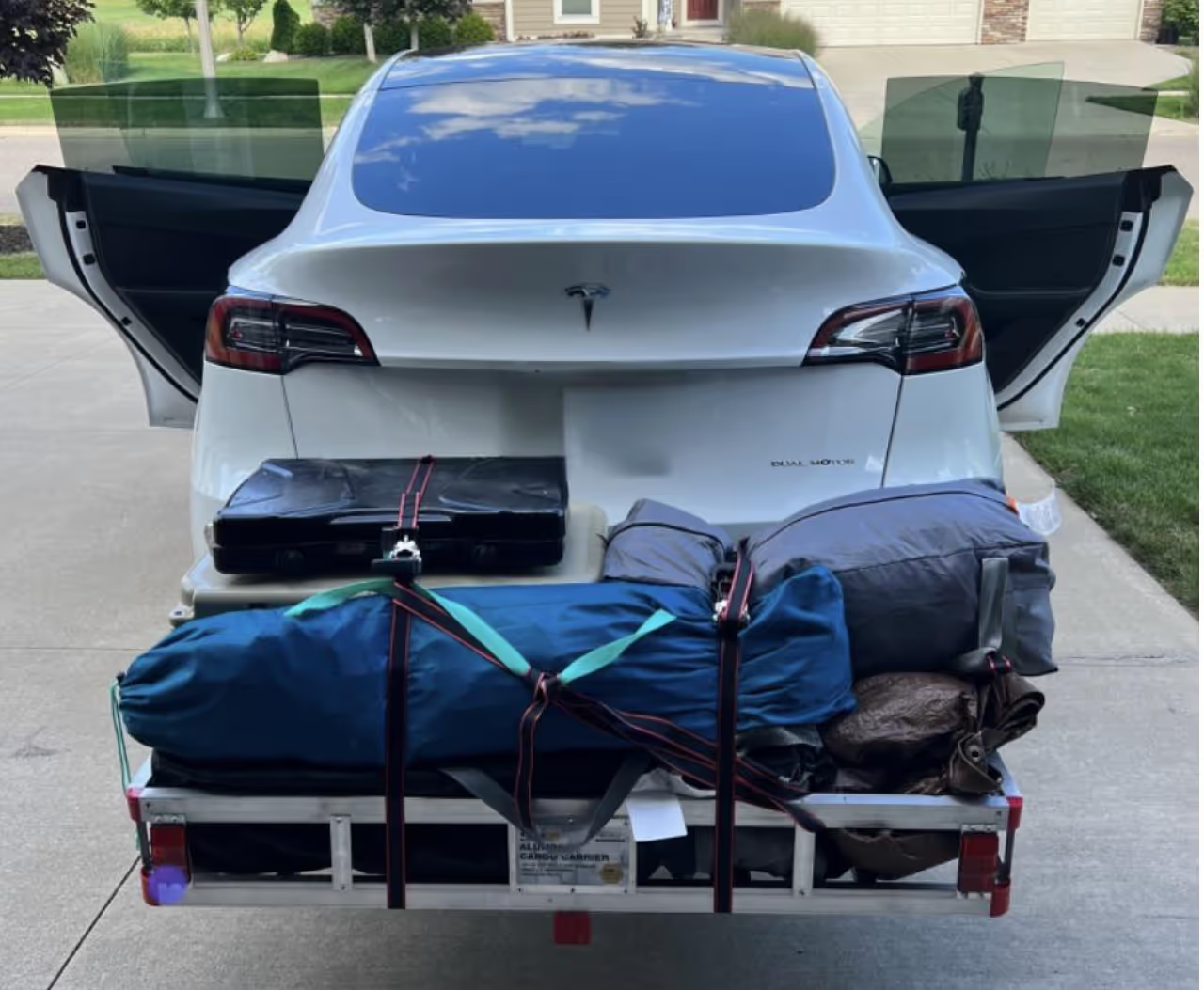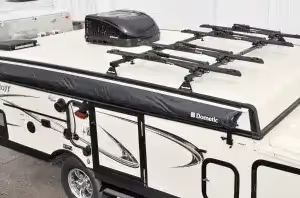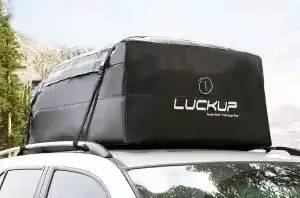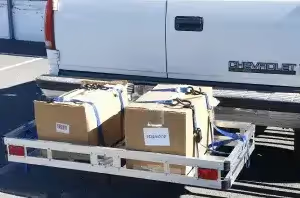How to Stop Roof Rack Wind Noise and Whistling: 7 Proven Fixes
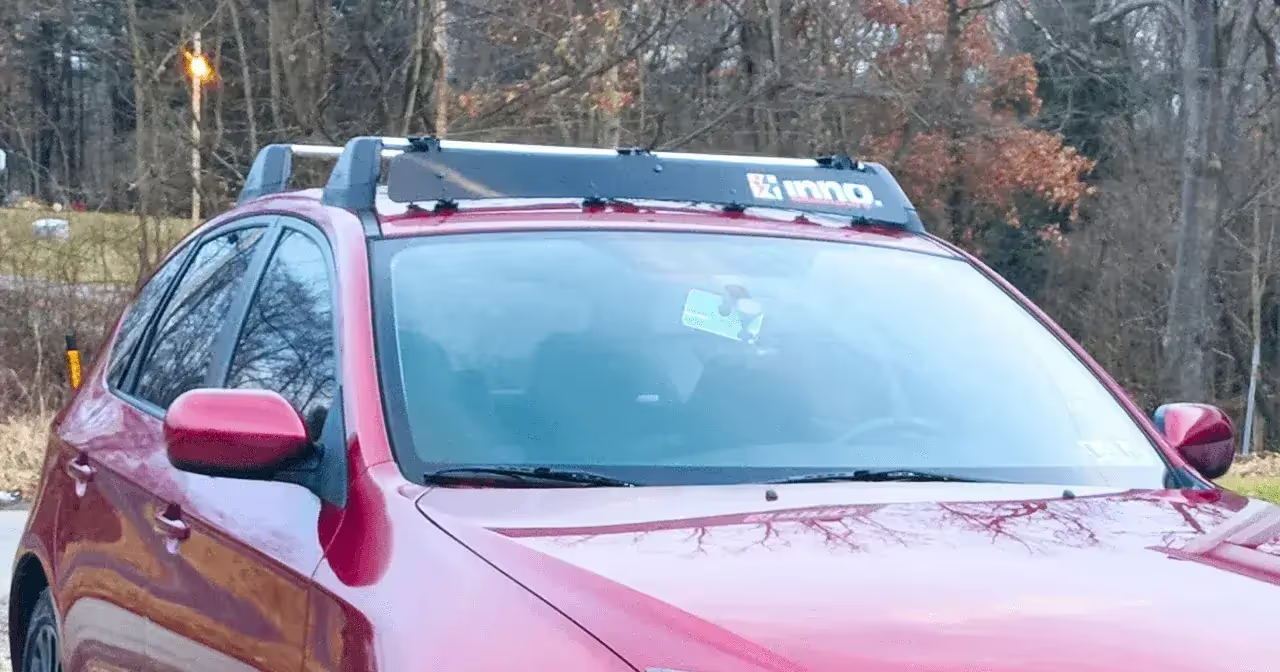
A whistling, noisy roof rack can become very annoying, especially on long trips.
What is cause it and how can I prevent it from happening?
This whistling is caused by wind hitting the roof rack at high speeds and can be easily fixed in a few different ways.
To fix a roof rack with excessive wind noise and whistling you can install a wind fairing, buy aerodynamic crossbars, or build a DIY wind deflector.
Over the years, manufacturers have made steady improvements to reduce wind noise, but as we head deeper into 2025, the conversation around aerodynamic efficiency and EV-friendly designs has never been more relevant.
Whether you’ve just installed a brand-new rack on your electric crossover or you’re still rocking an older SUV, a few simple tweaks can drastically reduce (or even eliminate) that pesky whistling sound.
In this refreshed 2025 guide, I’ll walk you through the main causes of roof rack noise, the most effective fixes, and some top product recommendations.
Why Roof Racks Whistle & Make Noise
You may be wondering why your roof rack is so noisy in the first place.
This is because the wind makes a noise when passing through objects, especially at high speeds.
This is most noticeable on consistently-shaped, small objects (such as a roof rack). This is called “aeolian sound“.
As the wind passes quickly over your roof rack, the air is rapidly forced around the rack which makes a noise in the process.
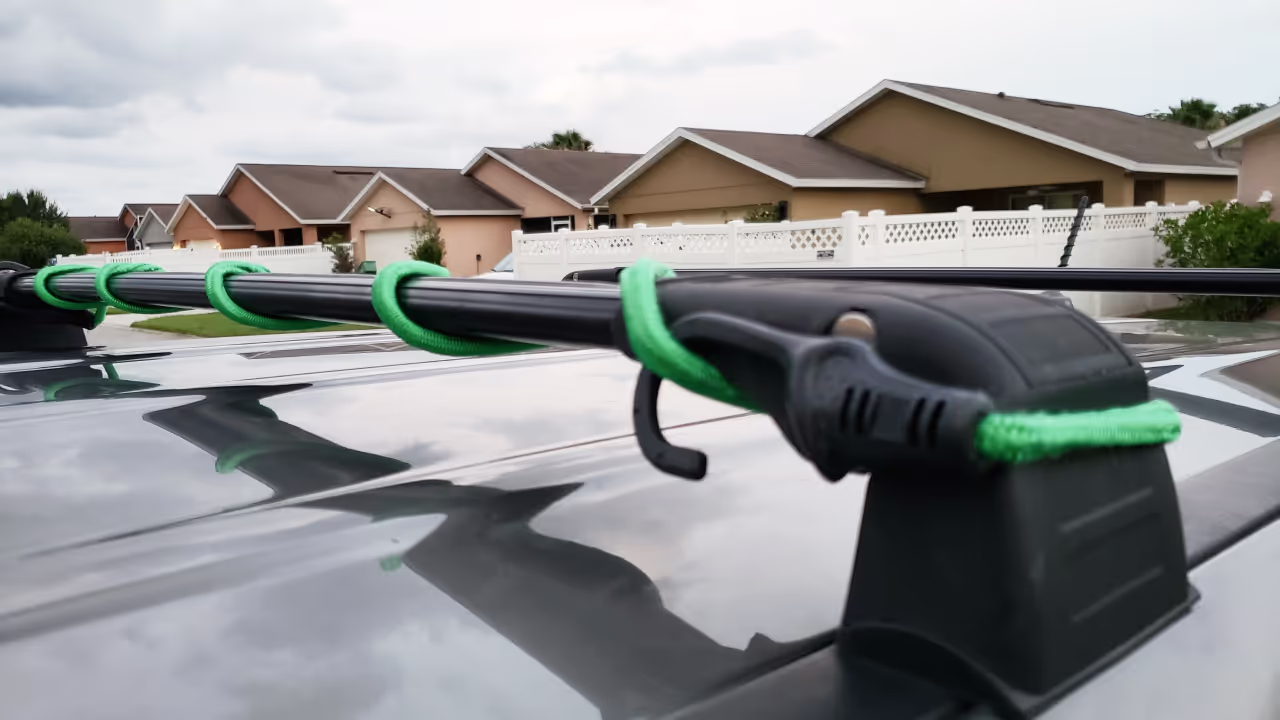
Airflow Turbulence
Roof racks disrupt the smooth flow of air over your vehicle, creating pockets of turbulence. These pockets can lead to vibrations that translate into a hum or whistle. With more EVs (sporting sleeker roof lines) on the road now, any added turbulence is more noticeable.
Gaps and Loose Fittings
Even tiny gaps between crossbars, end caps, or mounting brackets can generate whistling. If bolts or screws aren’t tightened properly, they can vibrate and amplify wind noise—especially at highway speeds.
Accessory Attachments
Bike trays, kayak cradles, and cargo boxes with older or non-aerodynamic designs can catch the wind like a sail. In 2025, many attachments come with low-profile mounts or integrated wind deflectors, but older models can still be a problem.
Worn or Missing Components
Rubber strips, end caps, or fairings can degrade over time. If you’ve had the same rack for a decade, age-related wear might be the root cause of your noise problem.
7 Methods to Stop Roof Rack Wind Noise
1. Start with a Proper Installation
Double-Check Mounting Points
Tighten Bolts & Screws: Ensure everything meets manufacturer torque specifications. Loose hardware is a top culprit.
Level Crossbars: Crossbars that are misaligned or angled can generate turbulence. Use a bubble level if needed.
Flush End Caps: Make sure end caps are fully seated—gaps at the ends of crossbars are prime spots for whistling.
This is my favourite tool (Rightline Gear Torque Wrench) with a built-in indicator ensuring you’re hitting the correct torque (widely available in auto stores and online retailers).
2. Buy a Roof Rack Wind Deflector
If you already own a roof rack, the best option to fix the wind noise and whistling is to install a wind deflector, commonly referred to as a wind fairing.
INNO Universal Mount Fairing - Top-rated
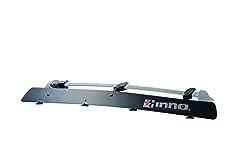
A roof rack wind fairing is an easy-to-install plastic shield that deflects wind away from the roof rack, therefore reducing wind noise.
Wind fairings are usually universal but are available in different lengths to fit your vehicle.
The top section of the wind fairing attaches to the front crossbar, while the bottom rests on top of the car. Most wind fairings include strips of protective film to protect your car’s paint.
The INNO universal mount fairing is one of the most popular wind fairings on the market.
It fits almost all crossbars and vehicle widths as it comes in three sizes: 31-inch, 40-inch, and 48-inch. Due to popular demand, it might be temporarily out-of-stock. That is worth the short re-stocking wait because it is affordable, high-quality, and durable.
How Much Do Wind Fairings Cost?
Roof rack wind fairings are great for fixing wind noise, but how much do they cost?
Wind fairings typically cost between $60 and $120 depending on the brand, quality, size, and design.
Some wind fairings are only compatible with roof racks made by the same manufacturer, therefore you should check compatibility before purchasing. If you must use a specific brand of wind fairing, you may end up paying more. Contrarily, a universal wind fairing is typically cheaper.
The size of your wind fairing may also influence its price. Large vehicles may require a longer wind fairing. Wind fairing prices can also be affected by quality and design. Some wind fairings come in different colors or designs, such as carbon fiber print. All these factors may drive up the price.
3. Use Aerodynamic Roof Rack Crossbars
If you’re looking for new roof rack crossbars, aerodynamic crossbars are designed to drastically reduce wind noise.
Aerodynamic crossbars
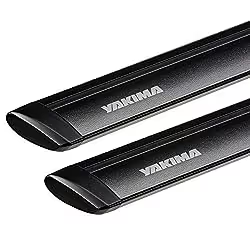
Instead of square or circular bars, aerodynamic crossbars are designed in an oval shape, allowing air to glide around the crossbars without making noise.
Some aerodynamic crossbars also include a wind diffuser strip, which reduces the wind noise even more.
Most aerodynamic crossbars are quiet enough that they don’t require a wind fairing. This means you’ll save time and money on purchasing and installing a wind fairing.
4. Roof Rack Wind Deflector DIY
If you don’t want to spend the money on a roof rack wind fairing, there is a quick fix that may stop your roof rack from whistling. This fix works by using a bungee cord to diffuse the wind hitting the rack.
Simply wrap a 4-foot bungee cord in a tight spiral around the crossbars, attaching the cord at both ends of the crossbar.
The bungee cord should be tightly wrapped around the crossbar to avoid flopping. If yours is loose, you’ll need a shorter bungee cord.
Follow along with the video below to see the exact steps.
If you’re still experiencing wind noise after trying this, you’ll need to purchase a roof rack wind fairing.
5. Get Rid of the Roof Rack
If you don’t use your roof rack very often, one simple solution may be removing it entirely!
Fewer attachments = less noise.
Many people don’t use their roof racks at all, so if you’re one of these people you should consider removing it from your roof.
This will guarantee that the wind noise issue is solved.
Don’t worry — You can always reattach the roof rack whenever you need to use it again!
Also check out: Best Thule Roof Storage Options
6. Consider Noise-Damping Products
Attach small foam or rubber pads around clamps, brackets, or contact points. These pads reduce vibrations at the source.
These Sound-Absorbing Pads, Originally used in car audio for reducing panel vibrations, these are now marketed for roof racks. Brands like Dynamat have new, smaller sheets designed specifically to fit crossbar profiles.
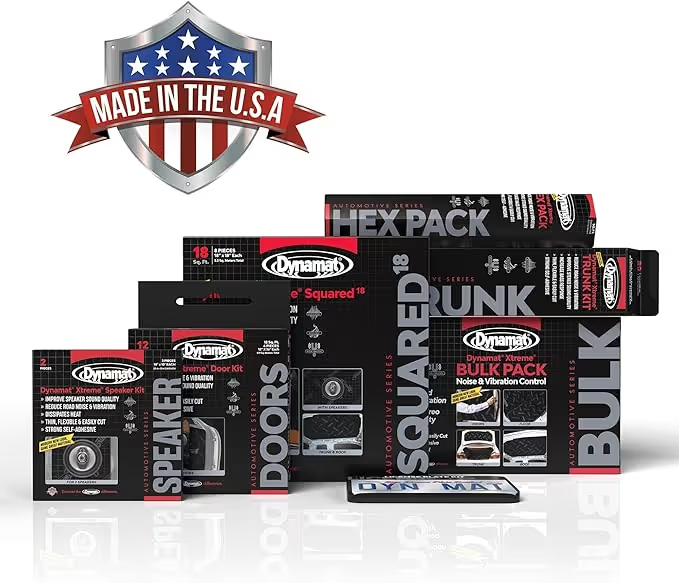
7. Maintenance & Routine Checks
Regular maintenance is key to a quieter drive. Inspect your rack for cracks in plastic end caps or peeling rubber strips—they can amplify wind noise if left unaddressed. A quick rinse to clear out dirt in T-slots or under fairings also goes a long way.
Seasonal changes matter too: in cold weather, rubber stiffens and may cause rattles, while in hotter months, metal components can expand and loosen screws.
- Check for Damage: Look for cracks or peeling rubber and replace parts promptly.
- Clean Debris: Remove any accumulated grime before it leads to more noise issues.
Installation and Positioning Tips for Your Roof Rack
Installing most roof racks is pretty straightforward. Sometimes the devil is in the details.
Positioning of roof rack is key not only for safety but also for minimizing wind noise and ensuring optimal aerodynamics.

Here's a guide to help you get it right:
1. Positioning to Minimize Wind Noise
Front Bar Placement. The front bar should be positioned in a location where the roof starts to curve downward. Placing it too far forward can catch more wind, leading to increased noise.
Rear Bar Placement: The rear bar's position will largely depend on what you're carrying. However, as a general rule, it should be placed where the roof is flattest to reduce wind resistance.
2. Spacing Between Crossbars
The spacing between the crossbars can indeed affect wind noise. Here's why:
Even Spacing. Evenly spaced bars distribute the load more effectively and reduce the chances of creating pockets that catch the wind. This can help in minimizing wind noise.
Accessory Positioning. Make sure that any accessories, like bike mounts or cargo boxes, are positioned in a way that they don't excessively protrude from the sides or front of the vehicle. This can help in reducing wind noise and improving aerodynamics.
3. Additional Tips for Installation
Avoid any vibration of loose parts by making sure all of your components are securely tightened.
In some situations, rubber pads can also dampen vibrations and reduce noise.
By ensuring proper installation and positioning, you can significantly reduce wind noise, improve fuel efficiency, and ensure the safety of your cargo and vehicle.
Choosing the Best Roof Rack Wind Fairing
Finding the best roof rack wind fairing is simple. Most wind fairings are similar in quality, design, and features, making it easy to choose between products.
Instead of comparing many different product features and specifications, wind fairings are straightforward. Typically, you only need to consider the size and price when choosing a wind fairing.
You should choose a wind fairing that stretches the length of your crossbars, without exceeding it. Use a measuring tape or check your crossbar’s product information to determine the length of the crossbars.
It is important to choose the longest wind fairing available without exceeding the length of the crossbar. This ensures that the entire length of the crossbar is covered without the wind fairing sticking out.
You should also consider the price (and quality) of the wind fairing before purchasing. Avoid spending less than $85 on a wind fairing since wind fairings below this price point tend to be low-quality. It’s worth spending more money for a more durable wind fairing by a trusted brand.
View wind fairings on Amazon.
Quietest Roof Rack Crossbars
If you’re looking for a new crossbar system for your car’s roof, you should consider one with an aerodynamic design. This will help reduce wind noise without the need for a wind fairing.
Although aerodynamic crossbars are more expensive than normal crossbars, they save you money since you won’t need a wind fairing to go along with it.
There are 2 aerodynamic crossbars that dominate the market:
Both of these crossbars are popular and known to be the best aerodynamic crossbars available, but which one should you choose?
Both crossbars are very similar. They cost roughly the same, look the same, etc. Although, some people have reported that the Yakima Whispbar is slightly quieter than the Thule Aeroblade.
Regardless, both crossbars drastically reduce wind noise while driving. Either one of these products is a great choice for aerodynamic crossbars, therefore you should choose the brand you trust the most.
Also check out: Why Are Roof Racks So Expensive?
FAQs
Are Quiet, Aerodynamic Crossbars Worth It?
With aerodynamic crossbars costing $200 or more, you may wonder if expensive roof rack crossbars are worth the price.
Roof racks are worth the price if you’re using them frequently, driving at high speeds, or taking a long trip.
For these scenarios, it’s important to have a roof rack that is stable, reliable and produces minimal wind noise.
If you’re concerned about wind noise, it’s absolutely worth purchasing aerodynamic crossbars. This will save you money in the end since you won’t need to purchase a wind fairing to accompany the crossbars.
Can Consistent Wind Noise Damage my Roof Rack or Vehicle Over Time?
Consistent wind noise itself is unlikely to directly damage your roof rack or vehicle.
However, a noise can be an indication of improper installation or a loose component on your roof rack.
If this happens, do your best to address it immediately as loose parts can lead to wear and tear or even damage your vehicle.
Does Wind Noise from Roof Racks Affect Fuel efficiency?
As for fuel efficiency, wind noise alone doesn't directly impact your fuel consumption.
However roof racks, especially when loaded, disrupt the smooth flow of air over the vehicle, increasing drag.
This means the vehicle has to work harder, leading to higher fuel consumption.
In reality, your fuel economy won't be effect by a huge amount. Your driving style, terrain and weather conditions will have a greater impact compare to wind noise and roof top cargo.
Conclusion: Tackling Roof Rack Wind Noise
Roof rack noise, known as "aeolian sound," arises from wind rushing over the rack.
While it's not directly harmful, it's annoying for longer trips. In rare cases, it can indicate that some of your parts are loose.
To combat this, here are 4 methods and solutions.
- Get wind a fairing: These are plastic shields that deflect wind away from the rack. They're affordable (typically between $60 and $120) and come in various sizes and designs.
- Consider aerodynamic crossbars: Oval-shaped bars designed to reduce wind noise. They might be pricier, but they save you the cost and hassle of adding a wind fairing.
- Fix it yourself with DIY: A tightly-wrapped bungee cord around the crossbars can help diffuse wind.
- Remove the rack: If you rarely use it, why not take it off? It's a surefire way to eliminate the noise.
Proper positioning during installation reduces noise and improves aerodynamics.
When choosing a wind fairing, consider size and quality. Brands like Thule Aeroblade and Yakima Whispbar offer top-notch aerodynamic crossbars.
And remember, a well-maintained, aerodynamic rack doesn’t just spare your ears.
It can also boost fuel efficiency (or preserve EV battery range), saving you money in the long run.
If you have any questions about quieting your rack or want personalized recommendations, contact me at MyCargoRacks.com—we’re always here to help you gear up the right way.
*proof-read by @Mike Rollins


